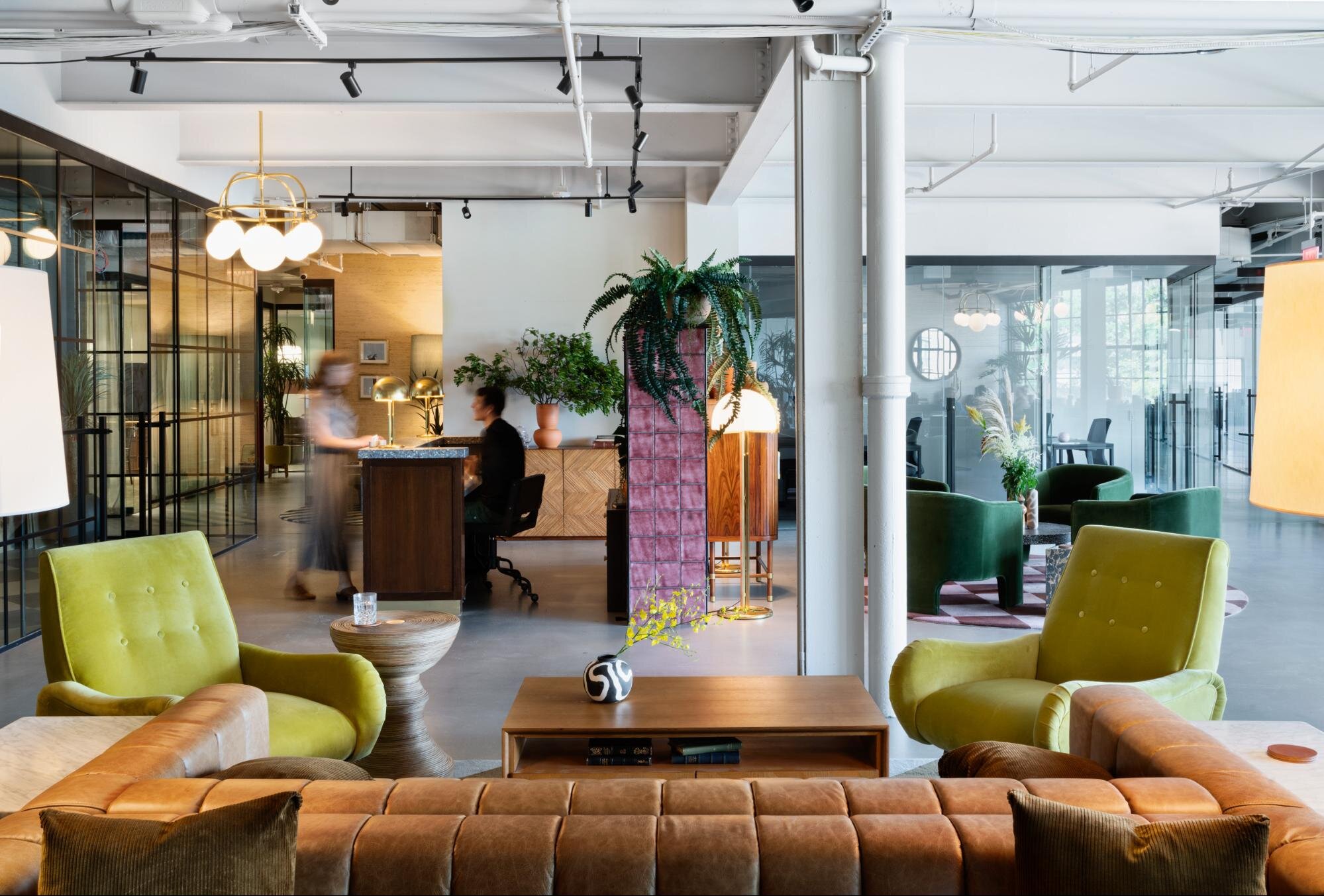
By Bond Collective Staff
The office lighting in your workspace has a direct effect on the mood, energy level, and productivity of your team.
Lighting that is too dim will make your employees feel tired and cranky. On the other hand, lighting that is too bright will be hard on their eyes — even triggering migraines — and will disrupt their body’s natural circadian rhythms.
The perfect lighting for the space helps your employees stay alert, creative, energized, and in the right state of mind to give 100 percent. But finding the balance between too dim and too light can be a difficult task.
In this article, we’ll tell you everything you need to know about office lighting and help you choose the right type of illumination for your unique situation.
Variables Of The Best Office Lighting
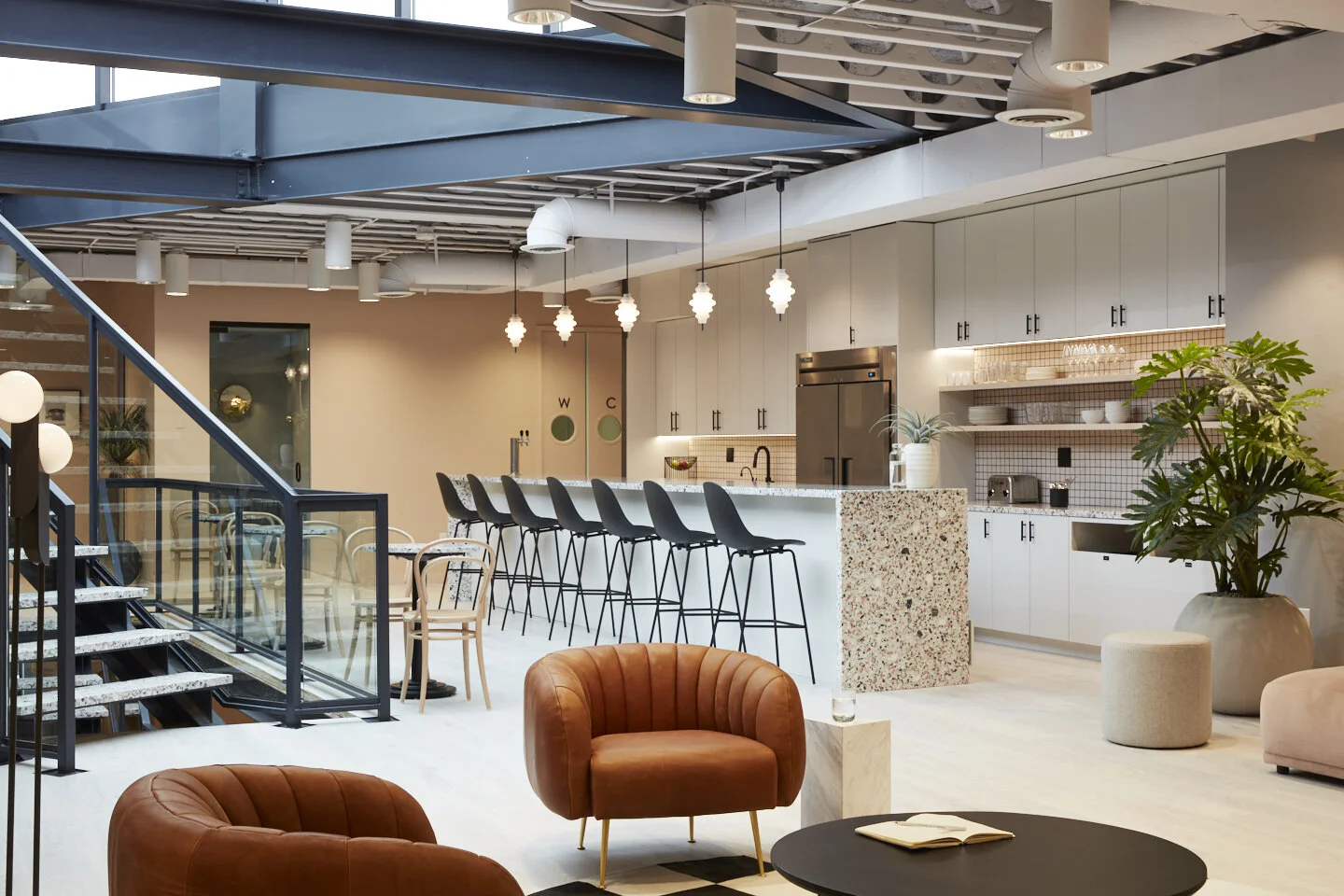
1) Office Lighting Standards
The U.S. General Services Administration (GSA) sets the minimum standard office lighting for all businesses in the United States. According to their website, a normal workstation requires 500 lumens per square meter.
That may seem like a lot — or may not make any sense at all if you’re not familiar with lumens — but it actually breaks down to this: every 6’x6’ (or 36 square-foot) space should receive the equivalent light as from a 35-watt incandescent bulb.
To put that in perspective, most desk lamps use a 60-watt bulb that produces 800 lumens.
The GSA also provides other office lighting standards, including the following:
Fluorescent ceiling fixtures and bulbs are the most basic suggested option
Lighting layout should provide an even amount of illumination for the entire office space
Fill in gaps with task lighting options
Adjust lighting options to minimize shadows
We’ll discuss some of these standards in more detail in other sections of this article.
2) Bulb Type
For large, open spaces like most office environments, fluorescent or light-emitting diode (LED) bulbs are the best option, but halogen and incandescent are also available.
Fluorescent bulbs are the most common because they are the older technology, but LED bulbs have several advantages over their elder sibling.
LED bulbs are cheaper to operate and maintain
LED bulbs have a longer life span
LED bulbs don’t use excess energy
LED bulbs don’t emit infrared radiation
LED bulbs don’t trigger migraines in people who are predisposed
LED lights can be dimmed to match the time of day and the season
LED bulbs don’t inhibit the production of melatonin nor interfere with sleep patterns
Before choosing one type of bulb or the other for your office lighting, be sure to weigh all of the pros and cons.
3) Color And Temperature
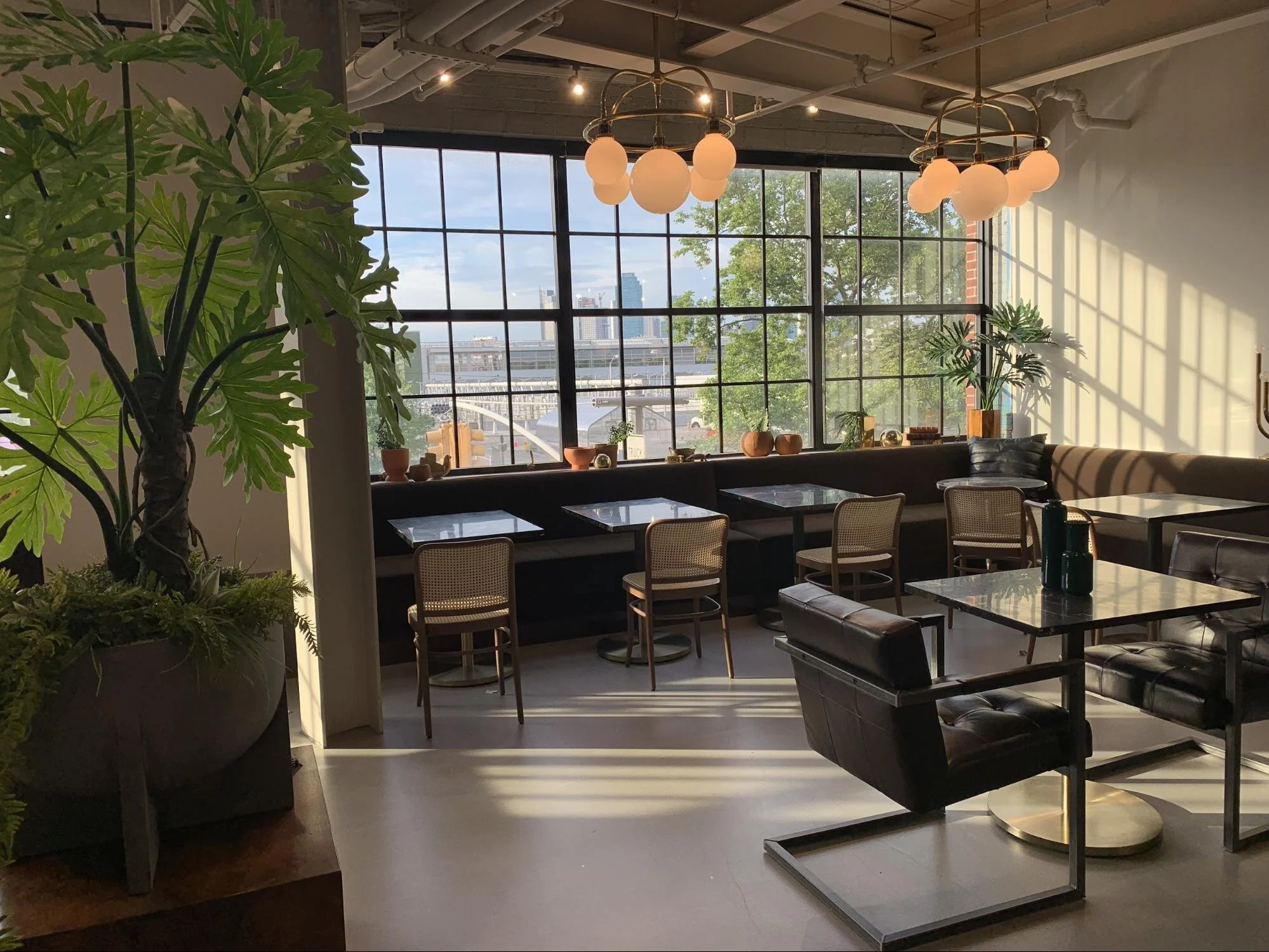
The color and temperature of your office lighting also play a vital role in the health and productivity of your team.
In general, warm yellow or warm orange lights are better for relaxing and unwinding, while cool blue or cool white lights are better for waking up, working, and concentrating.
Both fluorescent and LED bulbs emit light in the blue and white spectrum, making them ideal for morning illumination. LEDs also allow you to adjust the color and temperature so you can change the light they emit to mimic the natural light outside.
4) Brightness
Similarly, brightness affects the mood and energy level of the employees working in your office.
Bright light in the morning is best to stimulate alertness, activity, and creativity, while dim light in the afternoon is best for focused, stationary work.
Modern LED office lights come equipped with a feature that allows you to adjust the brightness of the bulbs (sometimes automatically) according to the time of day. They start out bright in the morning and gradually dim as the day goes on.
5) Cost
Cost is a major factor when considering the design of your office lighting because the bulbs will run anywhere from 14 to 18 hours (or more) every day.
Fluorescent and LED are typically the least expensive to operate, but you can reduce the cost of any type of bulb by installing motion sensors, timers, and dimmers to give you more control over the electricity used.
6) Computer Placement
Another variable to keep in mind when setting up your office lighting is computer placement.
The brightness of some lights — and even window location — can overwhelm even the best computer and laptop screens to such an extent that working on them becomes impossible.
Position your office lighting and computer placement accordingly.
How To Choose The Right Office Lighting
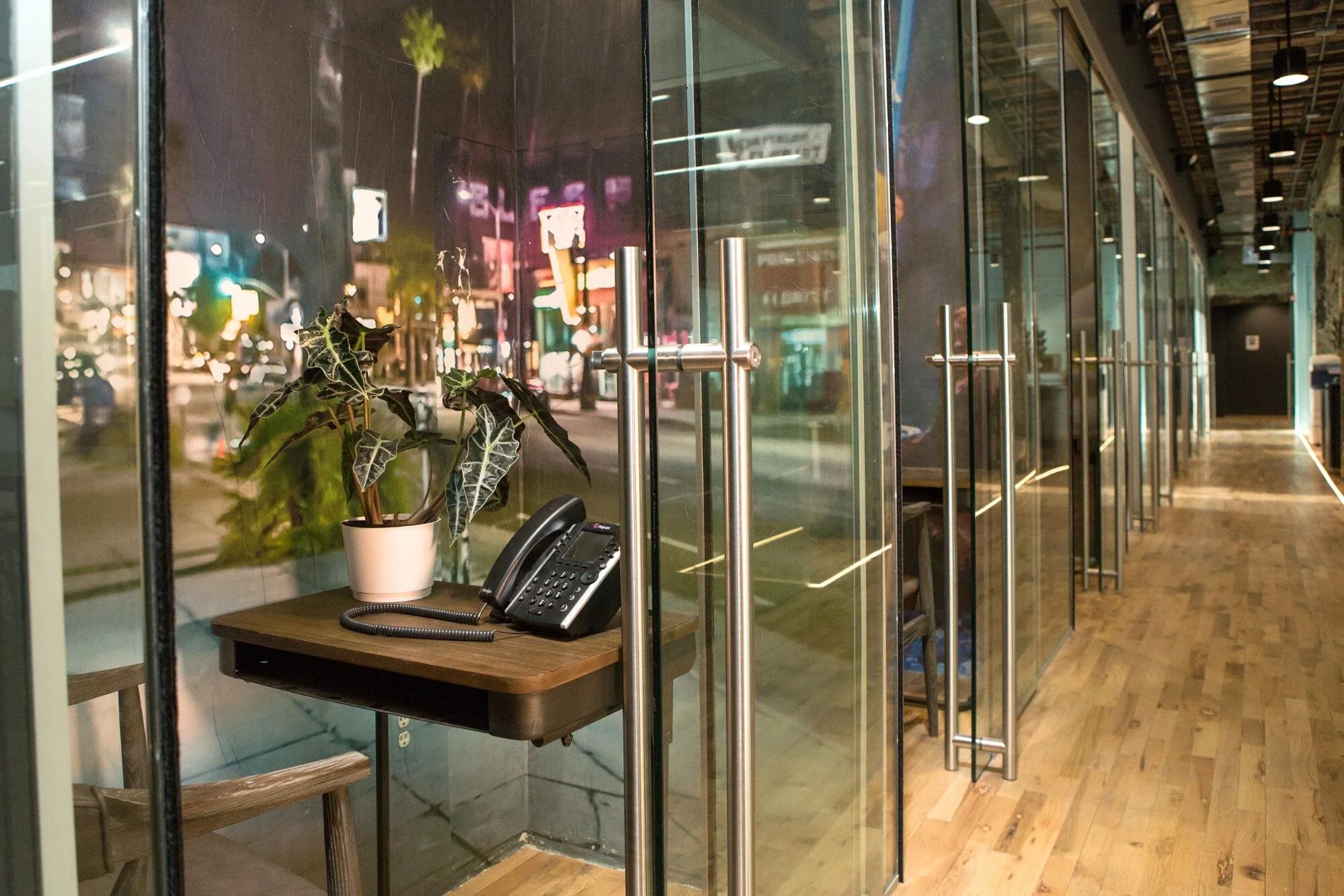
1) Examine Your Workspace
The first step in choosing the right office lighting is to examine your workspace.
Make note of where the natural light comes from and if there is sufficient natural light that you can dim (or even turn off) artificial lighting during the brightest part of the day.
Ask such questions as:
Is there enough existing light to, at least, meet minimum standards?
Can you improve on the existing arrangement?
Does glare become a factor at any position in your workspace?
Do team members complain about eyestrain?
You may even find it beneficial to hire a professional to conduct a detailed light survey to measure illuminance, luminance (they are different variables), reflectance, and contrast.
2) Determine The Type Of Office Lighting You Need
When it comes to office lighting, options include:
Direct
Direct-Indirect
Indirect
Shielded
Direct lighting — think desk lamp — is best as a supplement for indirect lighting at individual workstations.
Direct-indirect lighting — most often used in manufacturing to reduce glare — projects illumination up and down for even coverage throughout.
Indirect lighting — most often used in office settings — projects illumination up towards the ceiling where it disperses over the entire area in a more natural manner.
Shielded lighting — also used in office settings — filters and distributes illumination through various covers and lenses for complete coverage of a work environment.
In most office settings, a combination of widely dispersed light sources (direct-indirect, indirect, or shielded) and direct task lighting works well.
3) Provide Task Lighting At Every Workstation
As mentioned above, it’s best to supplement any ambient light — be it from windows or overhead bulbs — with direct task lighting at every workstation.
For an office environment, this means giving each team member access to an easy-to-use and easily adjustable desk lamp that provides at last 500 lumens.
4) Expose Your Team To As Much Natural Light As Possible
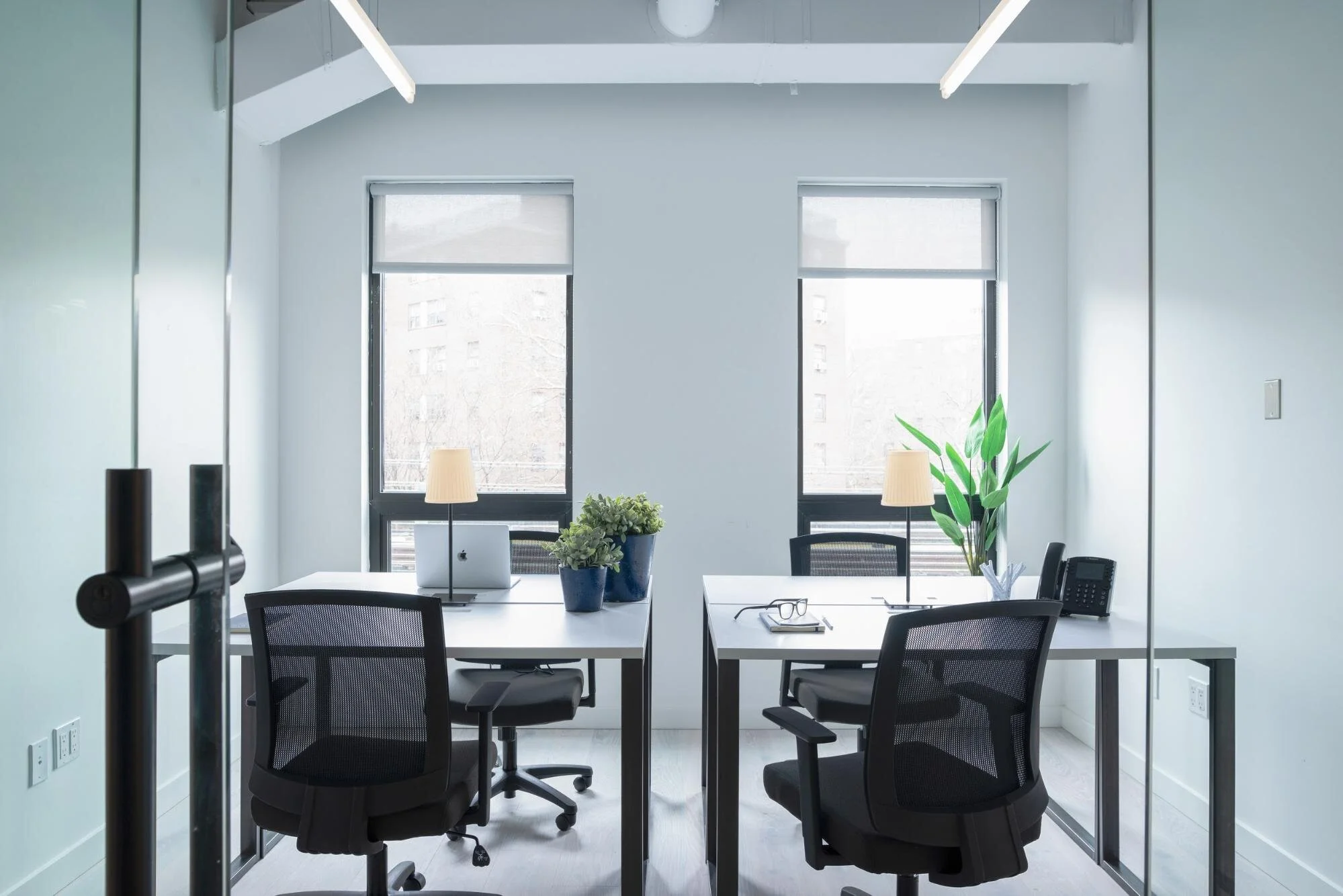
This step will depend a great deal on the space in which your team works.
Older buildings may have large, floor-to-ceiling windows that provide plenty of natural light throughout the day. Newer buildings may have smaller windows in only select locations that make it impossible to provide light to everyone on your team.
If windows are at a minimum in your workspace, consider installing office lighting that mimics the color and temperature of natural light in your area.
5) Prevent Flicker
Too much flicker in your office lighting — even flicker that’s undetectable to the naked eye — is annoying and, with prolonged exposure, can cause eye strain, headaches, and other health problems.
To prevent flicker from affecting your team:
Upgrade to lighting options with electronic ballasts
Ensure that all parts of the lights are in good working order
Schedule regular bulb replacement
With these measures in place, your team will be happier, healthier, and more productive over the long term.
Improve Productivity With A Well-Lit Workspace

As you can see, choosing the right office lighting is an important component of your business’s success. But it’s not the only way you can get the most out of your home office or team workspace.
Furniture, decor, color scheme, seating options, even traffic flow — all of these variables affect how well you and your team work in the space you choose.
That’s where Bond Collective comes in. We’ve designed our workspaces with your team’s happiness and productivity in mind.
Each of our shared office environments incorporates inspiring design elements, such as office plants, open floor plans, vivid colors, multipurpose workspaces, and the perfect lighting for the situation — plus a whole host of other design factors that will motivate your team to greatness.
In addition to our unique, well-decorated, and well-appointed office settings, businesses of all sizes also enjoy industry-leading amenities, such as:
Private-label mail service
Daily on-site cleaning
Custom build-outs
Guest reception and greeting
Insanely fast Wi-Fi
24-hour access
Concession food market
Bike storage
If you’re looking for a spacious, well-appointed collaborative workspace to boost your productivity and transform your business for the better, experience the best that modern office spaces have to offer.
Tour any one of our gorgeous Bond Collective locations in the United States, including New York, Pennsylvania, Washington D.C., Illinois, Tennessee, and Texas.
Then become a member of Bond Collective and take advantage of our coworking spaces, dedicated desks, and private offices to suit all your business needs.
To get started or to learn more about the advantages of coworking spaces for digital nomads, remote workers, and businesses of all kinds, visit BondCollective.com today or call to find out more about everything we have to offer.
As an expert in office lighting design and implementation, I bring a wealth of knowledge and hands-on experience to help businesses optimize their workspace illumination. My expertise is grounded in a comprehensive understanding of lighting standards, bulb technologies, color temperatures, brightness considerations, and cost-efficient solutions.
First and foremost, the U.S. General Services Administration (GSA) sets crucial standards for office lighting, emphasizing a minimum of 500 lumens per square meter for a normal workstation. This translates to the equivalent of light produced by a 35-watt incandescent bulb in a 6'x6' space. Additionally, the GSA recommends fluorescent ceiling fixtures and bulbs, an even lighting layout, filling in gaps with task lighting, and adjusting options to minimize shadows.
When it comes to bulb types, I advocate for the use of fluorescent or LED bulbs in large office spaces. While fluorescent bulbs are common, LED bulbs offer advantages such as energy efficiency, longer lifespan, and the ability to adjust color and temperature to mimic natural light.
Understanding the impact of color and temperature on productivity is crucial. Warm yellow or warm orange lights are suitable for relaxation, while cool blue or cool white lights are better for waking up, working, and concentrating. Both fluorescent and LED bulbs emit light in the blue and white spectrum, making them ideal for morning illumination.
Brightness is another vital factor. Bright light in the morning stimulates alertness and creativity, while dim light in the afternoon is conducive to focused, stationary work. Modern LED office lights often come with features that automatically adjust brightness according to the time of day.
Considering the cost is essential, as office lighting may run for extended hours. Fluorescent and LED bulbs are generally cost-effective, and additional savings can be achieved by incorporating motion sensors, timers, and dimmers.
Computer placement is often overlooked but crucial. Improper lighting can overwhelm computer screens, affecting visibility and usability. Careful positioning of office lighting and computers is necessary to avoid such issues.
In terms of choosing the right office lighting, a thorough examination of the workspace is the initial step. Factors such as natural light availability, glare, and potential eyestrain should be considered. The type of office lighting, whether direct, direct-indirect, indirect, or shielded, should be determined based on the specific needs of the workspace.
Task lighting at each workstation is essential to supplement ambient light. Providing at least 500 lumens through easily adjustable desk lamps enhances individual workstations.
Maximizing natural light exposure is recommended whenever possible. For spaces with limited natural light, installing office lighting that mimics natural light in color and temperature can be beneficial.
Preventing flicker is critical for the well-being of the team. Upgrading to lighting options with electronic ballasts, ensuring the lights are well-maintained, and scheduling regular bulb replacements can eliminate flicker-related issues.
In conclusion, a well-lit workspace is a key component of a productive office environment. While office lighting is essential, other factors such as furniture, decor, color schemes, and amenities also contribute to overall workspace effectiveness. Bond Collective offers well-designed workspaces with inspiring elements, including optimal lighting, to enhance team productivity. Choosing the right office lighting is a significant investment in your business's success, and it goes hand in hand with creating a motivating and efficient workspace.